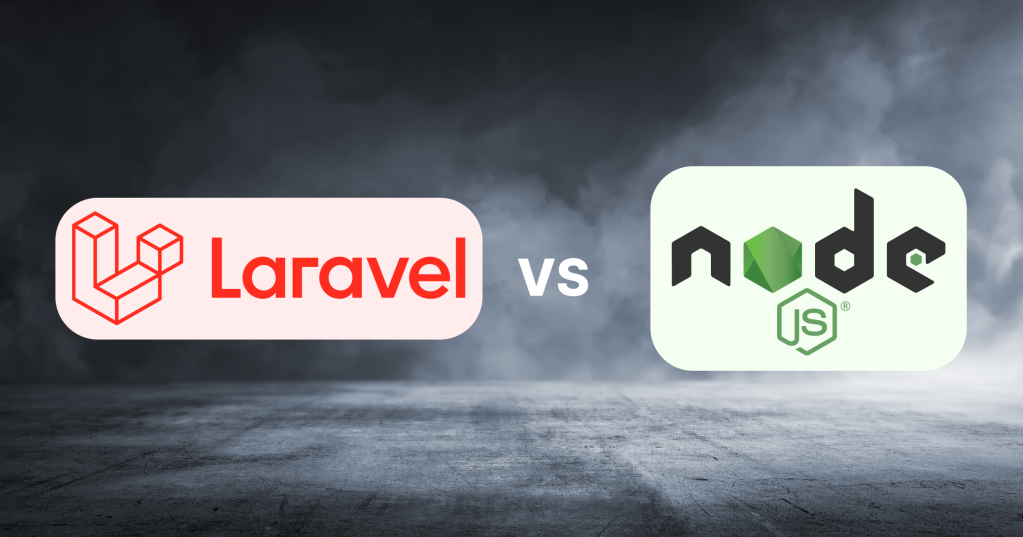Laravel vs Node.js Choosing the Right Technology for 2025
As we approach 2025, the decision between learning Laravel or Node.js becomes crucial for developers aiming to stay ahead in the tech industry. This article delves deep into both technologies, comparing their features, use cases, and future prospects to help you make an informed decision.
Understanding Laravel and Node.js
When deciding whether to learn Laravel or Node.js in 2025, it’s essential to consider their unique strengths and the types of projects they excel in. Laravel, as a PHP framework, is renowned for its elegant syntax and developer-friendly features like Eloquent ORM, Blade templating, and built-in tools for tasks such as authentication and routing. It’s ideal for developers who prioritize rapid application development and prefer working within a structured, opinionated framework. Laravel’s ecosystem, including tools like Laravel Forge and Vapor, also simplifies deployment and scaling, making it a strong choice for traditional web applications.
On the other hand, Node.js is a runtime environment that extends JavaScript’s capabilities to server-side development. Its non-blocking, event-driven architecture makes it highly efficient for handling real-time applications, such as chat apps, gaming servers, or streaming platforms. Node.js thrives in scenarios where scalability and performance under high concurrency are critical. Additionally, its vast npm ecosystem offers unparalleled flexibility, allowing developers to build custom solutions tailored to specific needs.
Choosing between the two depends on your career goals and project interests. If you aim to work on modern, real-time applications or full-stack JavaScript development, Node.js is a compelling choice. However, if you prefer building robust, feature-rich web applications with a focus on developer experience, Laravel is the way to go.
Performance and Scalability
When it comes to performance and scalability, Node.js and Laravel take fundamentally different approaches, each with its own strengths and trade-offs. Node.js, built on Chrome’s V8 JavaScript engine, leverages a non-blocking I/O model and an event-driven architecture. This allows it to handle thousands of concurrent connections efficiently, making it ideal for real-time applications like chat apps, gaming platforms, or live streaming services. Its lightweight nature and ability to process multiple requests simultaneously without significant resource overhead make Node.js a top choice for high-performance, scalable systems.
On the other hand, Laravel, a PHP framework, follows a more traditional synchronous request-response model. While it delivers reliable performance for most web applications, it can struggle with high concurrency due to its blocking nature. Scaling Laravel applications often requires additional resources, such as load balancers, database optimizations, or caching mechanisms like Redis. However, Laravel’s ecosystem provides tools like Horizon for queue management and Laravel Octane to boost performance, narrowing the gap in certain scenarios.
In summary, Node.js shines in scenarios demanding high concurrency and real-time capabilities, while Laravel offers robust performance for traditional web applications, albeit with more resource-intensive scaling requirements. Your choice will depend on the specific demands of your project.
Ease of Learning and Use
When evaluating the ease of learning and use between Laravel and Node.js, it’s essential to consider the unique strengths and challenges each brings to the table. Laravel, a PHP framework, is renowned for its comprehensive documentation and developer-friendly approach. Its built-in features, such as Eloquent ORM, Blade templating, and pre-configured authentication, significantly reduce the time and effort required to set up common functionalities. This makes Laravel an excellent choice for beginners or teams looking to quickly build robust web applications without diving deep into low-level configurations.
On the other hand, Node.js offers unparalleled flexibility, but this comes with a steeper learning curve. While its non-blocking I/O model is powerful, beginners may struggle with its event-driven architecture and callback patterns. The vast ecosystem of npm packages is both a blessing and a curse—while it provides solutions for almost any problem, the sheer volume can overwhelm newcomers. Additionally, Node.js requires a deeper understanding of JavaScript and asynchronous programming, which can be challenging for those new to the language.
Ultimately, Laravel is more approachable for those seeking a structured, opinionated framework, while Node.js demands a higher initial investment in learning but rewards developers with greater flexibility and control. Your choice will depend on your familiarity with the underlying technologies and your project’s specific needs.
Community and Ecosystem
When choosing between Laravel and Node.js, the strength of their respective communities and ecosystems plays a pivotal role. Laravel boasts a tightly-knit, highly active community that thrives on its elegant syntax and developer-friendly approach. The ecosystem is rich with tools like Laravel Forge, Envoyer, and Vapor, which streamline deployment and scaling. Additionally, Laravel’s ecosystem includes packages like Jetstream, Sanctum, and Horizon, which extend its capabilities for authentication, API development, and queue management. The community is known for its extensive documentation, tutorials, and forums like Laracasts, making it easier for developers to troubleshoot and learn.
On the other hand, Node.js benefits from the massive npm ecosystem, which hosts over a million packages, offering unparalleled flexibility for developers. The Node.js community is vast and diverse, with contributions from both individual developers and large corporations. This results in a wealth of libraries, frameworks, and tools like Express.js, NestJS, and Socket.IO, catering to a wide range of use cases. However, the sheer volume of options can sometimes lead to decision fatigue. Both communities are highly active on platforms like GitHub, Stack Overflow, and Reddit, ensuring robust support for developers. Ultimately, the choice depends on whether you prefer Laravel’s structured, opinionated ecosystem or Node.js’s expansive, flexible environment.
Use Cases and Industry Adoption
Laravel and Node.js cater to distinct use cases, making them suitable for different types of projects. Laravel, a PHP framework, excels in building robust, server-side web applications with elegant syntax and built-in features like Eloquent ORM, Blade templating, and Artisan CLI. It is widely adopted for content management systems (CMS), e-commerce platforms, and enterprise-level applications. Companies like BBC, Pfizer, and TourRadar have leveraged Laravel for its scalability and developer-friendly ecosystem. Its ability to handle complex database interactions and secure authentication makes it ideal for traditional web applications.
On the other hand, Node.js, a JavaScript runtime, shines in real-time applications, APIs, and microservices due to its non-blocking, event-driven architecture. It is the go-to choice for applications requiring high concurrency, such as chat applications, gaming platforms, and streaming services. Companies like Netflix, LinkedIn, and Uber have utilized Node.js for its performance and scalability in handling real-time data. Its lightweight nature and compatibility with front-end JavaScript frameworks make it a favorite for modern, full-stack development.
Industry adoption varies based on project requirements. Laravel is preferred for structured, database-heavy applications, while Node.js dominates in real-time, high-performance scenarios. Understanding these use cases is crucial for aligning your learning path with industry demands in 2025.
Future Trends and Updates
Looking ahead to 2025, both Laravel and Node.js are poised to evolve in response to emerging trends and technologies. Laravel, with its strong focus on developer experience and rapid application development, is likely to further integrate with modern frontend frameworks like Vue.js and React, enhancing its full-stack capabilities. The Laravel ecosystem is expected to expand with more robust tools for serverless computing and edge computing, catering to the growing demand for scalable, low-latency applications. Additionally, Laravel’s adoption of PHP 8.x features, such as JIT compilation and improved type safety, will continue to boost its performance and appeal.
On the other hand, Node.js is anticipated to solidify its position as a leader in real-time applications and microservices architectures. With the rise of WebAssembly and Deno, Node.js may adopt more runtime optimizations and security enhancements to stay competitive. The Node.js community is also likely to focus on improving its integration with AI/ML frameworks and IoT platforms, making it a go-to choice for data-intensive and connected applications. Both technologies will benefit from the growing emphasis on sustainability and energy-efficient coding practices, as developers increasingly prioritize eco-friendly solutions. By 2025, the choice between Laravel and Node.js will hinge on how well they adapt to these trends while maintaining their core strengths.
Integration with Modern Technologies
When it comes to integrating with modern technologies like cloud services, containerization, and microservices, both Laravel and Node.js offer robust solutions, but their approaches differ significantly. Laravel, being a PHP framework, excels in seamless integration with cloud platforms such as AWS, Google Cloud, and Azure through its ecosystem of packages like Laravel Forge and Envoyer. These tools simplify deployment and scaling, making it ideal for developers who prefer a structured, opinionated workflow. Laravel also supports containerization via Docker, with pre-configured setups like Laravel Sail, enabling developers to quickly spin up local environments. For microservices, Laravel’s modular architecture and support for API-driven development make it a strong contender, though it may require additional effort compared to Node.js.
On the other hand, Node.js, with its event-driven, non-blocking architecture, is inherently well-suited for modern tech stacks. Its lightweight nature and compatibility with tools like Kubernetes and Docker make it a natural fit for containerized environments. Node.js also shines in microservices architectures, thanks to frameworks like NestJS and Express, which streamline the creation of scalable, decoupled services. Cloud integration is equally seamless, with native support for serverless functions on platforms like AWS Lambda and Google Cloud Functions. For developers aiming to build highly scalable, real-time applications, Node.js offers a more flexible and performant solution, especially when paired with modern DevOps practices.
Ultimately, the choice between Laravel and Node.js for integration with modern technologies depends on your project’s requirements and your team’s expertise. Laravel provides a more structured, developer-friendly experience, while Node.js offers unparalleled flexibility and scalability for cutting-edge architectures.
Security Features and Best Practices
When comparing the security features of Laravel and Node.js, it’s essential to understand their built-in mechanisms and how they address common vulnerabilities. Laravel is a PHP framework that prioritizes security out of the box. It includes features like CSRF protection, SQL injection prevention through Eloquent ORM, and built-in encryption for sensitive data. Laravel also offers robust authentication systems, password hashing via Bcrypt, and middleware for role-based access control. These features make it easier for developers to follow best practices without extensive customization.
On the other hand, Node.js, being a runtime environment, relies heavily on its ecosystem for security. While Node.js itself doesn’t provide built-in security features like Laravel, its vast library of packages, such as Helmet for HTTP header security and bcrypt.js for password hashing, allows developers to implement strong security measures. However, this flexibility comes with a caveat: developers must be vigilant about the packages they use, as vulnerabilities in third-party libraries can pose significant risks.
Both technologies emphasize the importance of following best practices, such as regular dependency updates, input validation, and secure session management. While Laravel simplifies security with its built-in tools, Node.js offers flexibility but requires a more hands-on approach to ensure a secure application.
Cost Implications and Resource Availability
When considering the cost implications of choosing between Laravel and Node.js, several factors come into play. Laravel, being a PHP framework, often benefits from lower hosting costs due to the widespread availability of PHP-compatible servers. Shared hosting plans are typically cheaper and more accessible for PHP-based applications. However, Node.js, which runs on JavaScript, may require more robust hosting solutions like cloud services (AWS, Google Cloud) or specialized Node.js hosting platforms, which can increase costs. Additionally, Node.js applications often demand more server resources due to their event-driven, non-blocking nature, potentially leading to higher operational expenses.
In terms of development tools, Laravel offers a rich ecosystem with tools like Laravel Forge and Envoyer, which streamline deployment and management but may come with subscription fees. Node.js, on the other hand, relies heavily on open-source tools like npm and Express, which are free but may require more customization and setup time.
Hiring talent is another critical factor. PHP developers, especially those familiar with Laravel, are generally more abundant and less expensive to hire compared to skilled Node.js developers, who often command higher salaries due to the demand for JavaScript expertise in modern web development.
Resource availability for learning and troubleshooting is strong for both technologies. Laravel boasts extensive documentation, a vibrant community, and numerous tutorials, making it beginner-friendly. Node.js also has a wealth of resources, including comprehensive documentation, online courses, and active forums like Stack Overflow. However, the learning curve for Node.js can be steeper due to its asynchronous programming model and the need to understand JavaScript deeply.
Ultimately, the choice between Laravel and Node.js should consider not only the immediate costs but also the long-term implications for your project and team.
Making the Right Choice for Your Needs
When deciding between Laravel and Node.js for your next project or career path in 2025, it’s crucial to align your choice with your specific needs, team expertise, and long-term goals. Laravel, a PHP-based framework, is ideal for developers who prioritize rapid development, elegant syntax, and built-in features like Eloquent ORM and Blade templating. It’s particularly suited for projects requiring robust backend systems, such as e-commerce platforms or content management systems. On the other hand, Node.js, with its event-driven architecture and non-blocking I/O, excels in real-time applications like chat apps, streaming services, or APIs requiring high scalability.
Consider your team’s familiarity with the technologies. If your team is proficient in PHP, Laravel will reduce the learning curve and speed up development. Conversely, if your team has experience with JavaScript, Node.js offers seamless integration with front-end frameworks like React or Angular. Additionally, think about your long-term goals. If you aim to work on modern, scalable, and real-time applications, mastering Node.js might be more beneficial. However, if you’re targeting industries that rely heavily on PHP-based systems, Laravel could be the smarter choice. Ultimately, the decision should balance your project’s technical requirements, your team’s expertise, and your career aspirations.

Conclusions
Choosing between Laravel and Node.js in 2025 requires a careful consideration of your project needs, team skills, and future trends. Both technologies offer unique advantages and challenges. By understanding their differences and aligning them with your goals, you can make an informed decision that propels your projects and career forward.



